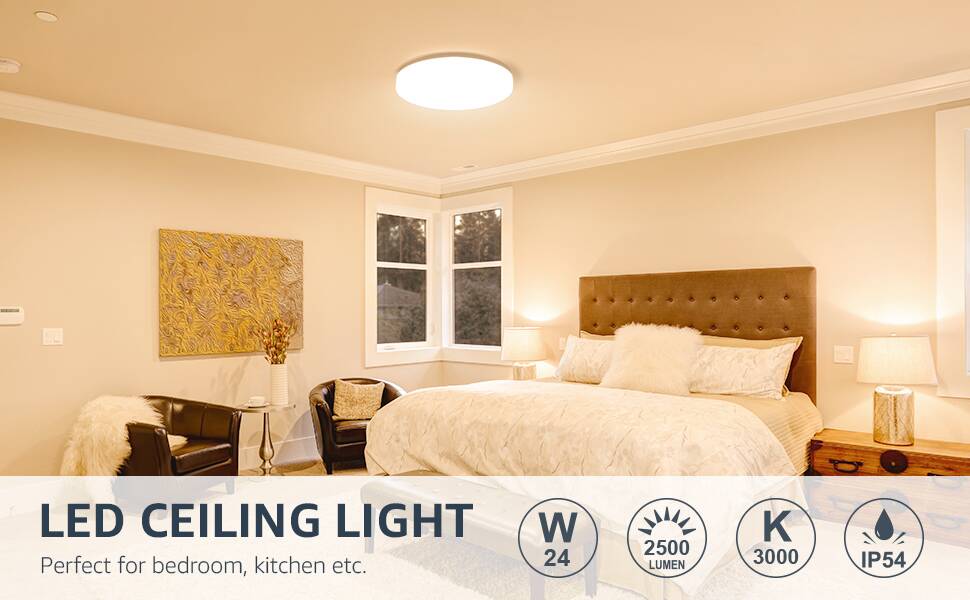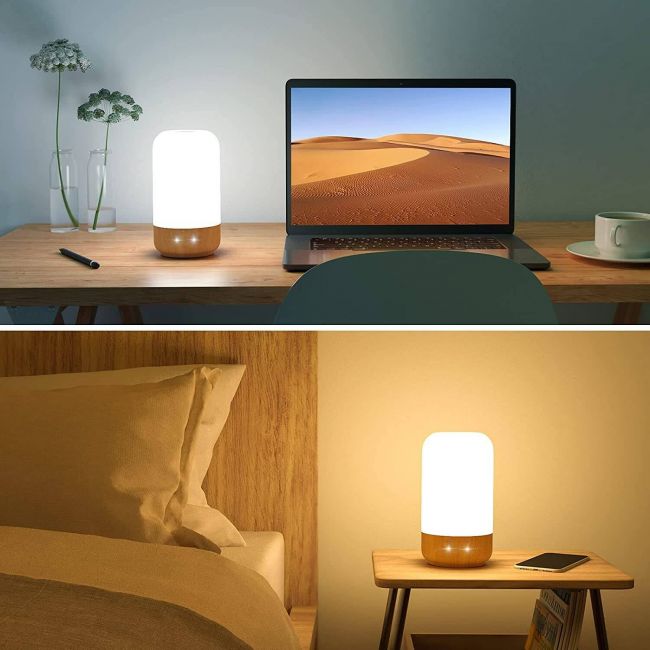Light is a major factor in regulating our circadian cycles and has far-reaching effects on our health and happiness. It’s easy to forget about bedroom lighting when you’re planning the lighting design of your house; after all, most people like their bedrooms to be as gloomy as possible. However, properly managing the light in your bedroom may help you get up and out of bed in the morning and get to sleep at night. Here are some suggestions for lighting your bedroom.
Lighting the Bedroom in Layers
The key to a successful and efficient lighting design in the bedroom, like with any other room in the house, is to layer the three fundamental forms of lighting.
Ambient Lighting
There should be enough ambient light in every area of your house for you to be able to move around comfortably and safely at all times. There are a few techniques to generate ambient or general lighting in your bedroom, in addition to letting in as much natural light as possible:
- The space is illuminated uniformly by the central overhead lighting, which may be adjusted in brightness through a dimmer switch.
- In the absence of a bedroom ceiling light, floor lights can serve as a suitable replacement. The number of floor lights you’ll need depends on the size of your bedroom.
- Soft ambient light may be achieved with the use of lamps that cast indirect light, such as wall sconces.
Ceiling fixtures with a lower lumen output that illuminate the entire space evenly are preferable in most bedrooms. Wiring your ambient lighting to a dimmer switch gives you even more control over the amount of light in a room at any given time of day.
Task Lighting
Add layers of task lighting for reading, sewing, or makeup application if your bedroom also serves as an office.
A directional table or desk lamp with a lower color temperature is ideal for dedicated workstations since it helps you to maintain focus and alertness while you work. Bedside lighting is a type of task lighting, but it has certain requirements that must be met. Read on for some helpful hints on how to illuminate the area.
Wall sconces placed strategically beside your mirror may offer job lighting for your closet or bathroom vanity, allowing you to see clearly while you dress or apply your makeup. In order to avoid leaving the house in the wrong suit, it is recommended that you use light bulbs with a high color rendering index (CRI).
Decoration or Accent Lights
Accent lighting is used to draw attention to specific objects or characteristics in a room, such as a work of art, a particularly interesting piece of furniture, or an interesting architectural detail like coving. The purpose of accent lighting is slightly altered when used in the bedroom:
- Accent lighting, as opposed to general or task lighting, is ideal for creating an intimate or tranquil ambiance. Using light dimmers is a simple technique to create an atmosphere.
- Diffusing the light and directing the eye around the room using accent lighting is another way to achieve this effect and provide the impression of greater space and harmony.
- The main purpose of accent lighting in a bedroom might also be aesthetic. Choose pendants or lamp shades that go with the style you’re going for, hang fairy lights, or use LED candles to illuminate the room.
Lighting Zones
More than one activity may take place in your bedroom, so you may choose to divide the space into several lighting areas. In addition to using many sources of illumination, you may simplify lighting design and management by dividing your room into distinct “zones” with their own independent switches.
Some popular lighting areas in a bedroom are as follows:
Bedside lamps provide a similar purpose to task lighting because they are typically used for reading in bed. Bedside lighting, in contrast to task lighting for a bedroom workplace, should not include blue light since it suppresses melatonin production. Choose light bulbs with a color temperature of about 2,000–2,7000K, often known as warm white or very warm white.
Additional Bedside Lighting Considerations Include the Following:
- Those who enjoy reading in bed should use a high-lumen light bulb and a dimmer switch to adjust the light’s intensity depending on their needs at any given time. Even 3-step lights are effective.
- The light won’t shine directly into your eyes with soft illumination coming from the sides. Opt for pendant or nightstand lights rather than overhead illumination. Make sure the bulbs are covered; unless you choose very warm white lights, bedroom lighting should not have exposed bulbs.
- For lamps on nightstands, go with a white or cream shade. While dark hues can create a dramatic and alluring appearance, they can also reduce visibility and make text harder to read.
- Consider hanging pendant lights above your bedside tables if your bedroom is compact. Your lights won’t occupy important table space this way.
Wardrobe Lights
The ability to see your closet contents in the morning is greatly enhanced by good illumination. When deciding how to illuminate this area, keep in consideration the following:
- To better see the contents of your closet, choose bright lights with a daylight-like color temperature (about 6,500K).
- Direct the light down toward your closet rather than up at your face.
- You can easily illuminate every nook and cranny of your closet with the help of LED strip lights or puck lights, which can be bent to fit around corners and fastened to the walls, ceiling, or door frames.
- Lighting your dressing area adequately using wall sconces that are strategically positioned near your mirror may double as ambient lighting by reflecting light off the wall.
Working Area
Even if it’s not ideal, it’s occasionally necessary to combine work and sleep in the same space. Lighting may be used to create a separate work area, away from your bedroom.
Task lighting should be bright and cool to keep you attentive and reduce eye strain; use a directional bulb so you can point it precisely where you need it.
Choosing Appropriate Light Bulbs
The color temperature and luminosity of a bulb may have a significant impact on your mood, productivity, and ability to get up in the morning or go to sleep at night.
When choosing light bulbs for your bedroom, there are two factors to consider:
- Lumens
- Color temperature
Let’s examine these elements:
Lumens
With the rise in popularity of energy-efficient light sources like LEDs, it’s time to stop measuring light output in terms of watts and start measuring it in terms of lumens. With modern light bulbs using much less power to generate the same degree of brightness (measured in lumens), wattage has become an increasingly less relevant measurement.
Depending on the room’s size, its purpose, and the individual’s preferences, the recommended total lumens for a bedroom (cumulative between all lights in your area) is anywhere between 2,000 and 4,000.
Temperature of Color
One of the most crucial aspects of bedroom lighting is color temperature due to the profound effect it may have on our ability to stay awake and get work done.
Task lighting or directed lighting in the workplace that is predominantly white or blue has been demonstrated to increase alertness by decreasing melatonin synthesis.





